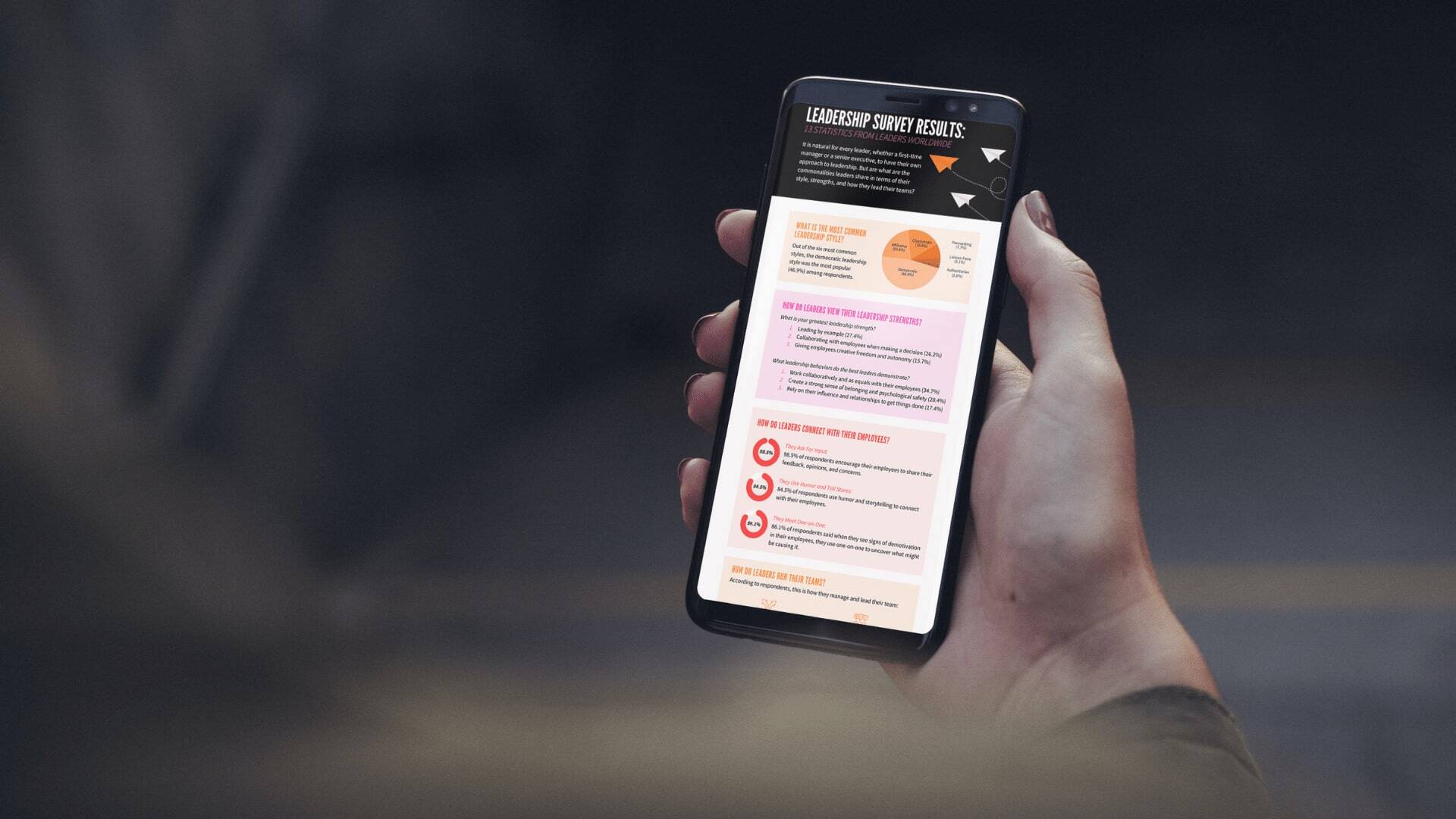4 min read
22 Leadership Brand Examples (+ Worksheet)
Your leadership brand is not defined by your title or the position you hold. It’s how people talk about you and your leadership. It’s your...
4 min read
 Michelle Bennett
:
Dec 6, 2022 6:00:00 AM
Michelle Bennett
:
Dec 6, 2022 6:00:00 AM

In 2022, Niagara Institute published the Leadership Styles Quiz to uncover how those in management roles approach leadership. The quiz was completed by 1,164 professionals in 48 countries, including Canada (30.1%), the United States (21.5%), and the United Kingdom (18.5%).
The results revealed 13 eye-opening leadership statistics on how leaders see themselves, their strengths, and how they lead their teams.

There is a growing appreciation for the value of self-awareness in leadership. When leaders are conscious of their behaviors, motives, strengths, and weaknesses and how they approach leading their people, they can build their emotional intelligence and be mindful of how they react in certain situations.
Given the desire by both leaders and organizations alike to build self-awareness in leaders on their style of leadership, we set out to create a short leadership styles quiz and guide that helped leaders understand which of the six leadership styles they deploy, along with the strengths and weaknesses of their approach.
After six months, we compiled 13 eye-opening leadership statistics from the leadership survey results that uncovered what style leaders are using most, what they believe their strengths and challenges to be, and how they connect and lead their employees
It is natural for every leader, whether a first-time manager or a senior executive, to have their own approach to leadership. To better understand how leaders typically behave, the different ways a leader manages their team has been categorized into six different styles. For more detailed information on each style and access to the leadership styles quiz, check out The Leadership Styles Handbook: Finding the Style That Works Best for You and Your Team.
The six leadership styles can be summarized as:
The leadership style results favored heavily towards three styles of leadership, democratic, affiliative, and charismatic, which made up 86.3% of the styles for all respondents. The breakdown of each style is as follows:
When asked how leaders view their leadership strengths, which are traits and qualities that they see best help them to be great leaders, three responses rose to the top of the list.
27.4% of respondents agreed that leading by example, that is, letting their actions and behaviors visually demonstrate what is expected of their employees, was their greatest strength.
The second most popular answer regarding leadership strengths was collaborating with employees to make a decision, to which 26.2% of respondents agreed. Collaboration and teamwork are essential to team and organization success, as collaborative leaders engage with their teams to make decisions and find solutions to challenges. By seeking feedback and input from their people, these leaders drive employee engagement and their employee’s sense of ownership over their work.
The third most popular answer (15.7%) was their ability to grant their team creative freedom and autonomy over their work. This is good news for organizations as autonomy is what employees want. PwC uncovered that nearly half of employees would forgo a 20% raise for greater autonomy and freedom over how they work.
The impact a great leader can have on employee satisfaction, motivation, productivity, and performance is unmatched by any other initiative or perk by an organization. For example, Dr. Joe Folkman found that the best leaders have employees at the 75th percentile of satisfaction and commitment, whereas the worst leaders have employees in the 26th percentile.
When we asked respondents what leadership behaviors the best leaders demonstrate, the results were:
Leaders who connect with their employees build relationships where they can help guide and grow their employees through coaching, feedback, and mentoring. O.C. Tanner discovered that when leaders connect with their employees to reinforce their team and company purpose, celebrate accomplishments, and foster connections with their peers, these employees are 747% more likely to be highly engaged at work.
When we asked leaders how they connect with their employees, this was their response:
To gain a deeper understanding of how team leaders run their teams on a day-to-day basis, we asked several questions regarding autonomy, decision-making, conflict resolution, and employee well-being. Here is what they had to say.
HOWEVER, HERE’S WHAT LEADERS SAID THEY WORRY ABOUT.
The leadership survey results uncovered three areas that leaders worry about. These included:
%20(1).png)
4 min read
Your leadership brand is not defined by your title or the position you hold. It’s how people talk about you and your leadership. It’s your...

6 min read
Some say, 'Delegate more!' while others warn, 'Don't micromanage.' The truth is, there's no one-size-fits-all answer because effective leadership is...

7 min read
Have you ever wondered why some people seem to just naturally know how to lead and inspire others? It turns out that there are scientific theories...